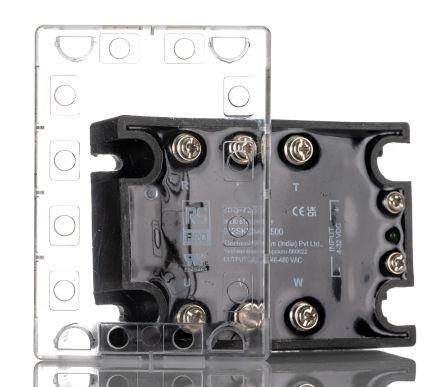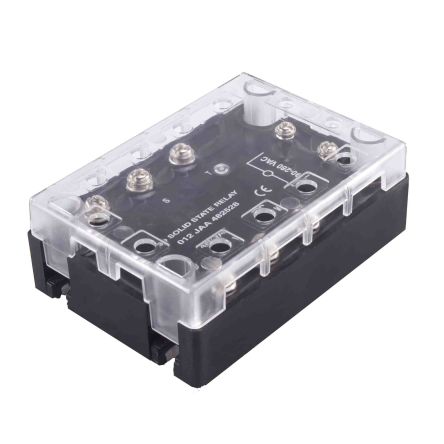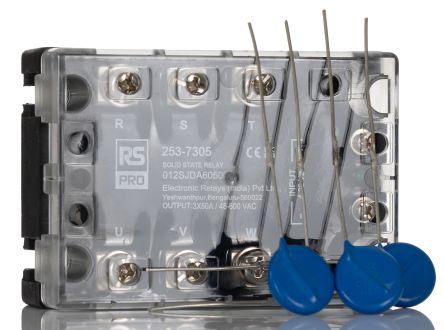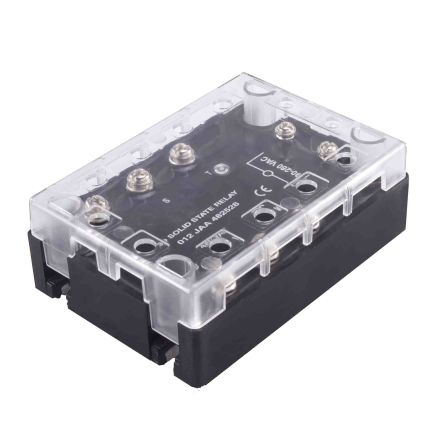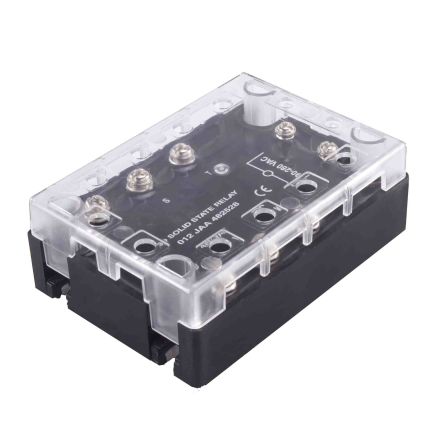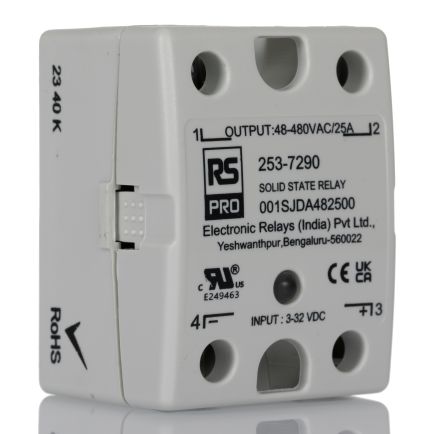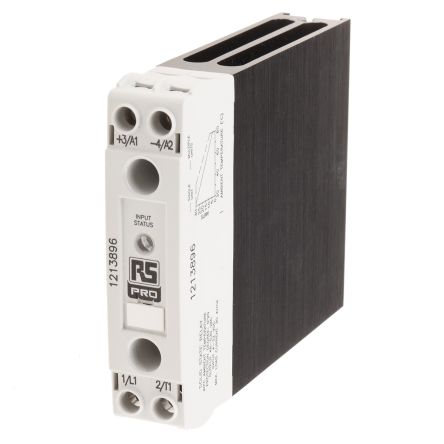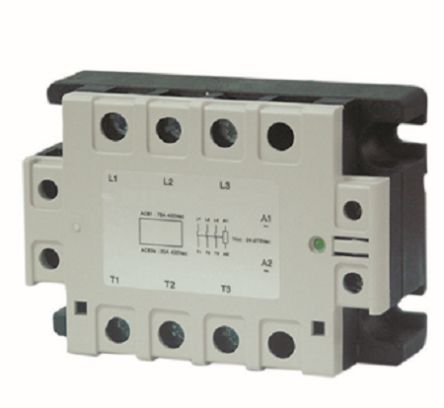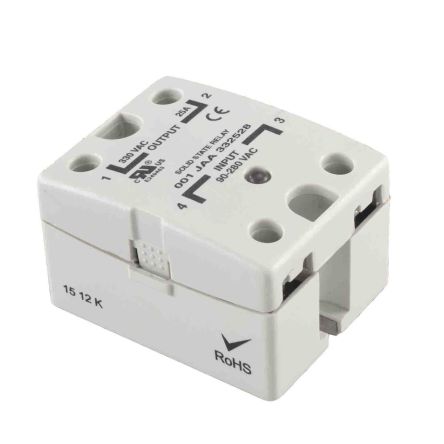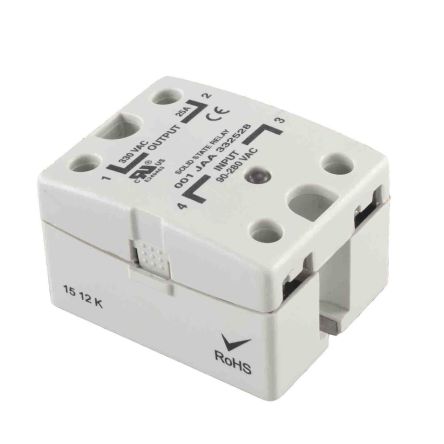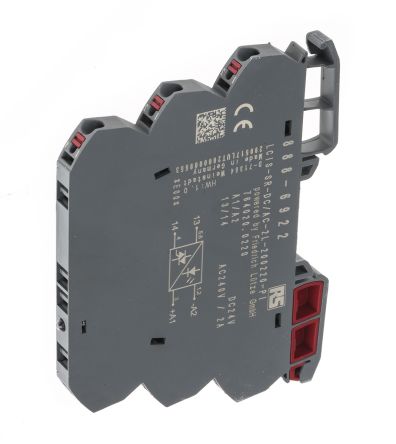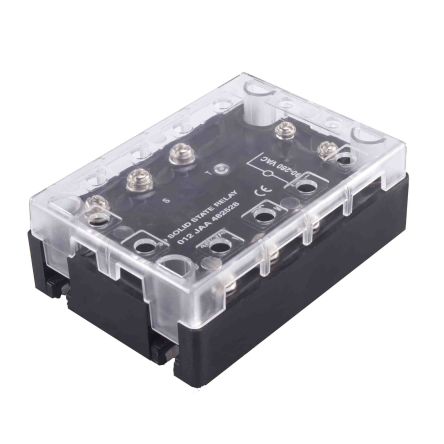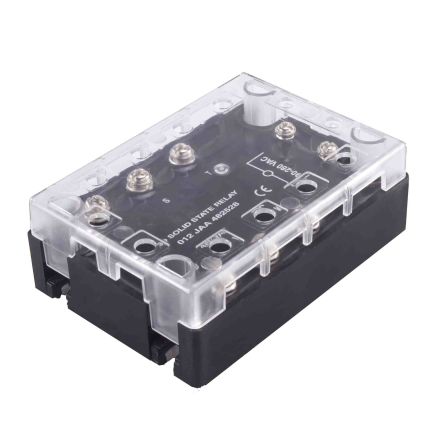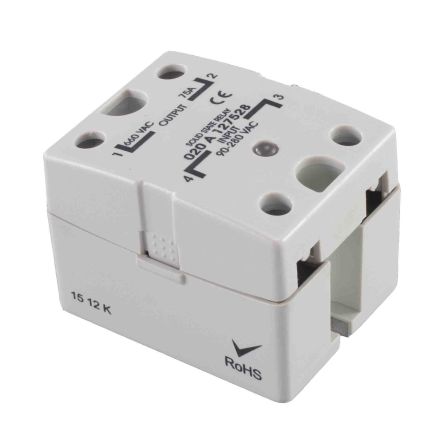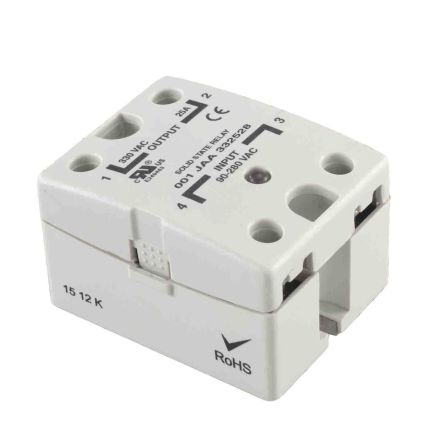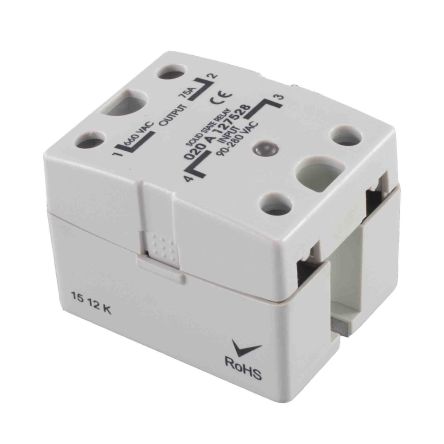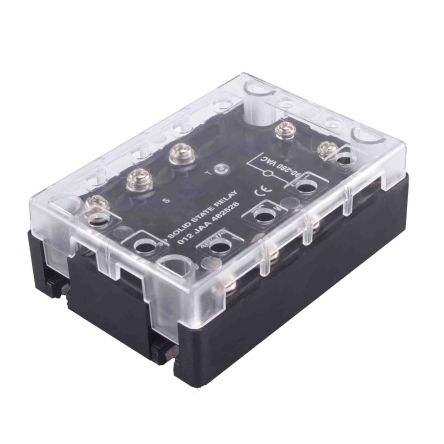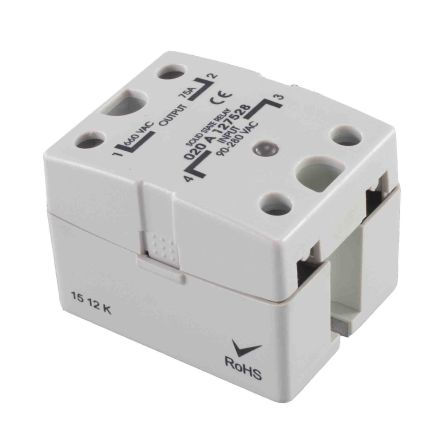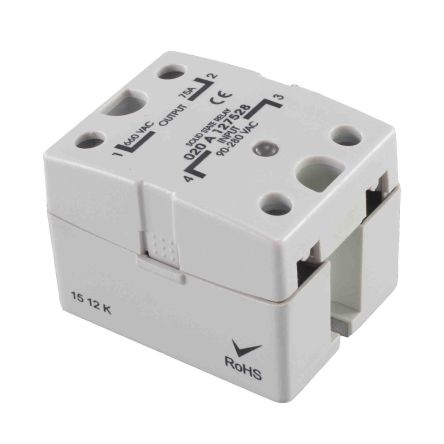- Automation & Control Gear
- Cables & Wires
- Enclosures & Server Racks
- Fuses & Circuit Breakers
- HVAC, Fans & Thermal Management
- Lighting
- Relays & Signal Conditioning
- Switches
- Batteries & Chargers
- Connectors
- Displays & Optoelectronics
- ESD Control, Cleanroom & PCB Prototyping
- Passive Components
- Power Supplies & Transformers
- Raspberry Pi, Arduino, ROCK, STEM Education & Development Tools
- Semiconductors
Solid State Relays
Solid state relays, or SSRs are electrical switching devices that serve the same purpose as electromechanical relays, but without the moving parts, hence the name 'solid state'. By having no moving parts, the SSR tends to have a longer operational lifetime as they are not subjected to wear and tear.
How Solid State Relay Works
SSRs work by using semiconductors and optical isolation to control electrical loads. When a low-voltage signal is applied to the input, the relay uses an LED and a photodetector to trigger a semiconductor switch on the output side, which opens or closes the circuit. This method of switching ensures no physical movement, making solid state relays faster and more reliable than their electromechanical counterparts.
Key Components of a Solid State Relay
SSRs consist of several essential components that allow for reliable switching without mechanical wear. The key components are:
- Control Circuit: This part includes input signal conditioning, which adjusts the input signal for the output drive circuit. The input can be either AC or DC, depending on the specific solid state relay type.
- Output Drive Circuit: The output drive circuit contains transistors or thyristors that switch the load. These circuits are built to handle the current and voltage requirements of the load.
- Isolation Circuit: This circuit ensures isolation between the control and output drive circuits to prevent interference and protect the system.
- Heat Sink: During operation, solid state relays generate heat, and a heat sink, typically made of aluminum or copper, is necessary to dissipate the heat and provide effective cooling.
- Overvoltage Protection Circuit: This circuit safeguards the solid state relay from damaging voltage spikes that could harm the output drive circuit.
- Status Indicators: SSRs often include LEDs or other indicators to visually signal the operational status of the relay.
Types of Solid State Relays
There are various types of solid state relays designed for different applications, load currents (0.1 amp, 30 amp, or 150 amp) and voltage levels ( 12V, 24V dc or 240V). These include the following:
Zero-Crossing SSRs (Synchronous SSRs)
Zero-crossing solid state relays are popular for switching AC loads like heating elements or lighting. They activate when the AC voltage waveform crosses zero, minimizing surges and electrical noise. These relays are available for different voltage ranges, making them ideal for controlling high-voltage systems with low electromagnetic interference (EMI).
Random Turn-On SSRs (Non-Zero Crossing SSRs)
Unlike zero-crossing types, random turn-on solid state relays switch at any point in the AC cycle. They are commonly used with inductive loads such as AC electric motors and transformers, where precise timing is required to manage inrush currents.
Analog-Controlled SSRs
Analog-controlled solid state relays allow for proportional control, typically used for dimming lights or controlling variable-speed motors. These relays can handle various voltage inputs, making them suitable for both low and high-voltage environments.
DC SSRs (DC to DC)
DC solid state relays are designed for DC load switching. These SSRs are commonly found in battery-operated systems or solar power applications.
AC SSRs (AC to AC)
AC solid state relays are widely used in industrial automation to control AC-powered devices. They provide efficient, noise-free switching for systems operating on high voltages. These are typically used in applications where precise control of AC loads is critical, such as in heating or lighting systems.
MOSFET Switching SSRs
MOSFET switching solid state relays utilize MOSFETs (Metal-Oxide-Semiconductor Field-Effect Transistors) as the switching element. These transistors offer several advantages over traditional thyristor-based SSRs, including lower on-state resistance, faster switching speeds, and reduced power dissipation. This makes them ideal for applications requiring high efficiency and precise control, such as motor control, power supplies, and industrial automation. They are also suitable for switching capacitive loads and offer improved thermal performance.
Benefits of Using an SSR Relay
The main advantage of SSR relays over conventional electro-mechanical relays is that they have no moving parts to wear out and, therefore, no contact bounce issues. SSRs can switch both ON and OFF much faster than a mechanical relay armature can move, as well as zero voltage turn-on and zero current turn-off, eliminating both electrical noise and transients.
Industrial Applications of Solid State Relays (SSR)
Solid state relays are used across various industries due to their durability, fast switching, and high reliability. Some common industrial applications include:
Industrial Automation
In industrial automation, SSRs are used to control motors, solenoids, and other high-power devices. Their ability to handle frequent switching without wear makes them ideal for controlling production lines and heavy machinery.
HVAC Systems
SSRs are commonly used in HVAC systems to manage heating and cooling elements. They provide efficient, reliable control of temperature-sensitive components without the noise or wear associated with mechanical relays.
Medical Equipment
In the medical industry, solid state relays are used in diagnostic and imaging equipment. Their silent operation and reliability ensure minimal interference and downtime in critical healthcare systems.
Robotics
SSRs are widely used in robotics to control motors, actuators, and other components that require precise and rapid switching. Their fast response times and long life make them ideal for robotic systems used in manufacturing and research.
Lighting Control
In commercial and industrial lighting systems, solid state relays are used to manage power delivery to lighting fixtures. They are particularly useful in systems that require dimming or precise lighting control.
How to Select the Right Solid State Contactor Relay
Choosing the right solid state relay depends on various factors, which include:
Voltage and Current Requirements
Determine the voltage and current levels of your application. Whether you need a solid state relay in 12V, 24V dc, or 240V, it’s essential to match the relay’s specifications with your system’s electrical load.
Load Type
Identify the type of load (AC or DC) you’ll be controlling. AC solid state relays are best for alternating current loads, while DC relays are suited for direct current applications.
Switching Frequency
Consider the switching frequency required for your application. SSRs are ideal for high-speed switching, so choose a relay that can handle the necessary number of operations per second.
Environmental Conditions
Ensure the SSR is designed to withstand the environmental conditions where it will be installed, such as temperature, humidity, or exposure to dust and moisture. Look for relays with heat sinks or protective enclosures for added durability.
Trusted Solid State Relays Manufacturer, Supplier & Distributor in Philippines
RS is your one-stop shop for solid state relays in the Philippines. Discover products from industry-leading brands like Sensata/Crydom, Omron, Panasonic, and Phoenix Contact, ensuring reliability and performance. Whether you're working on precise temperature control systems, sophisticated industrial automation, or complex system management, we have the right product to meet your specific needs.
Aside from solid state relays, you can also find other relay switches for your applications, including DPDT relays, voltage monitoring relay, and more. Explore our extensive catalog today and have your items delivered to you anywhere in the Philippines.
Buy SSR Relay Online from RS Philippines
At RS, we've made buying your solid state relay online quick and easy. Simply browse our extensive selection, add your desired product to your cart, and proceed to checkout. Our team will handle the rest.
Rest assured that we offer nationwide delivery so you can get access to quality SSRs wherever you are in the Philippines. Depending on product availability, you can enjoy delivery as fast as the next working day or within the next 12 months.
To learn more about our flexible shipping options and delivery timeframes, check out our delivery information guidelines.
Popular Searches
- ABB Solid State Relays
- Carlo Gavazzi Solid State Relays
- Celduc Solid State Relays
- Finder Solid State Relays
- Gefran Solid State Relays
- Omron Solid State Relays
- Panasonic Solid State Relays
- Phoenix Contact Solid State Relays
- Schneider Electric Solid State Relays
- Siemens Solid State Relays
- broadcom solid state relays
- crouzet solid state relays
- ixys solid state relays
